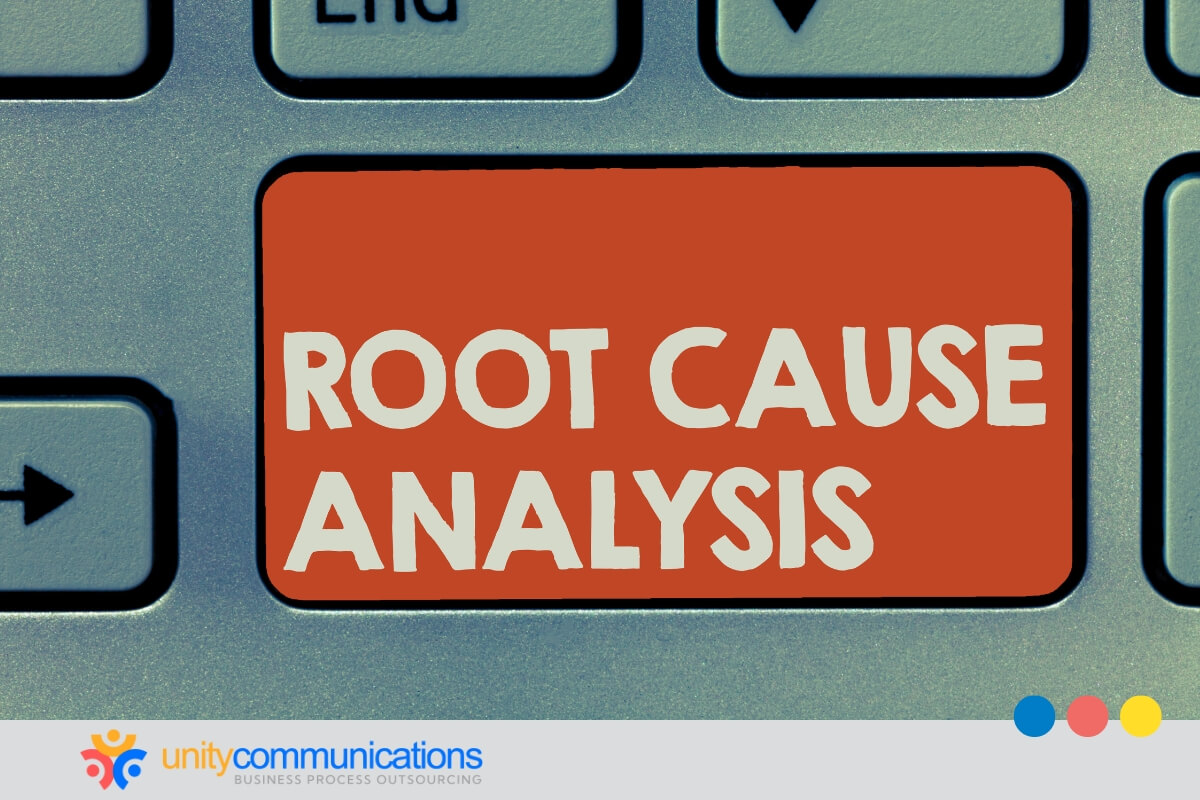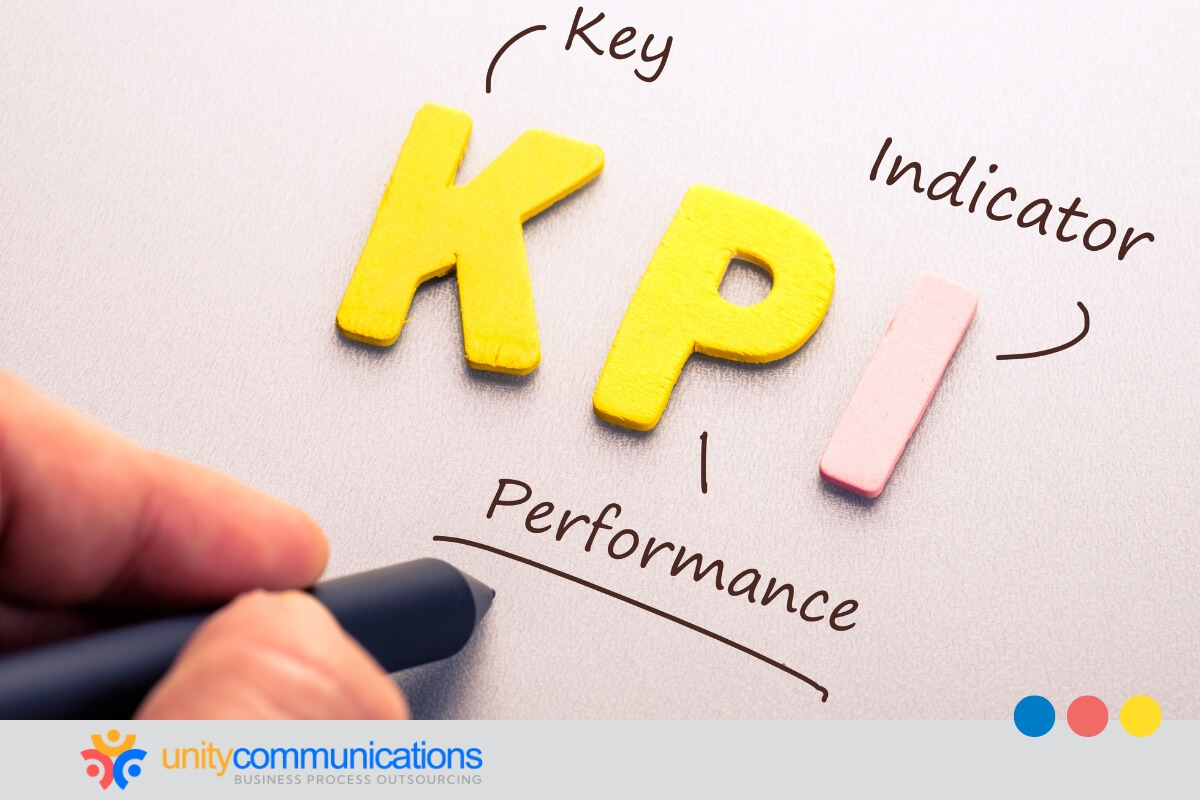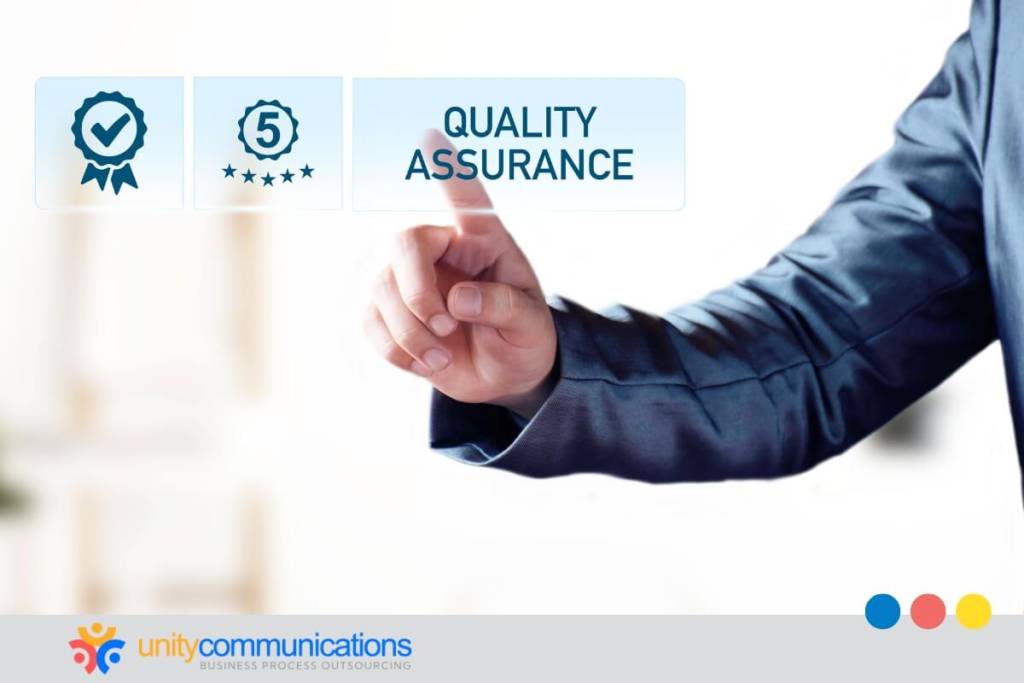Table of Contents
Service excellence is key to sustained growth and competitive advantage. With organizations increasingly relying on business process outsourcing (BPO) to streamline operations, optimize costs, and enhance customer experiences, the need for robust quality assurance (QA) has never been more critical.
QA models guide BPO companies and clients in adhering to standards, mitigating risks, ensuring excellence, and fostering continuous improvement in service delivery.
This article delves into different BPO quality assurance models, examining their significance on customer satisfaction and application in driving service excellence.
Quality assurance in BPO and its impact on customer satisfaction

QA refers to the systematic process that ensures BPO services meet or exceed the client’s predefined quality standards and expectations. Reports show that 42% of teams use it to assess performance.
QA encompasses various activities that improve the accuracy, efficiency, and effectiveness of outsourced processes. Below is an overview of the strategies involved in the quality assurance process:
- Standard setting. QA begins with establishing clear and measurable key performance indicators (KPIs) and metrics for the services provided. These include accuracy rates, response times, and customer satisfaction scores. The BPO provider and the client usually agree upon these standards.
- Performance monitoring. QA teams continuously monitor and evaluate the performance of call center agents and processes to comply with established standards. This process involves regularly evaluating KPIs, such as call quality, adherence to scripts, error rates, and regulation compliance.
- Feedback and coaching. QA specialists provide feedback to BPO agents based on their performance evaluations. This feedback helps agents understand their weaknesses and guides them in enhancing their skills and performance. Coaching sessions also address specific issues.
- Process improvement. QA initiatives often involve identifying process inefficiencies or areas for improvement. These can include streamlining workflows, updating training materials, implementing new technologies, or revising procedures to enhance quality and efficiency.
- Root-cause analysis. When quality issues arise, QA teams conduct root-cause analysis to identify the underlying reasons for the problem. They investigate factors such as training gaps, system errors, communication breakdowns, or other issues contributing to quality deviations.
- Quality audits. Periodic audits assess the overall quality of BPO operations. Auditors examine various aspects of the process, including output accuracy, adherence to protocols, and customer satisfaction levels. Audit findings identify areas for improvement and corrective actions.
BPO quality assurance models significantly impact customer experience and satisfaction in many ways. QA processes ensure that agents consistently adhere to predefined standards and procedures. This consistency in service delivery translates to a predictable and reliable experience for customers, which is essential for building trust and satisfaction.
QA processes also ensure that BPO providers meet or exceed the service-level agreements (SLAs) that clients define. For 45% of contact centers, quality assurance effectively tracks agent performance. Meeting SLAs demonstrates reliability and commitment to service excellence, positively influencing customer satisfaction.
Lastly, QA activities focus on identifying and addressing errors and inaccuracies in BPO processes. By minimizing mistakes and increasing output accuracy, QA contributes to smoother and more satisfactory customer interaction. Customers are less likely to encounter billing errors, data inaccuracy, or processing delays.
Different BPO quality assurance models
BPO companies have many quality assurance models and frameworks that ensure services meet or exceed predefined standards and client expectations. Many firms combine these approaches to oversee QA at various organizational levels.
Here are some commonly used QA models in BPO:
Operational quality assurance model
This model focuses on QA at the day-to-day operational level. It assesses agent and call center performance in routine tasks. An operational QA framework functions by:
- Identifying underperforming agents and devising strategies to enhance their performance
- Evaluating whether performance targets are being achieved and determining actions to meet them if not
Regular assessments and daily tracking of objectives help gather much-needed QA data. However, the operational QA framework’s narrow focus limits its effectiveness. It provides immediate or short-term solutions but cannot address underlying issues for long-term improvement.
Tactical quality assurance model
A tactical approach to call center quality assurance focuses on broader concerns affecting customer service quality. It aims to enhance overall service quality by identifying and addressing the underlying causes of subpar call center performance.
Key strategies in a tactical framework include:
- Identifying the root causes of poor performance and devising strategies for improvement
- Assessing potential knowledge gaps within the system
- Evaluating the team’s organizational workflow for any inefficiencies
Solutions to these challenges operate at the mid-level, necessitating restructuring and team retraining. Although the effects might not be immediately observable compared to operational interventions, they contribute to long-term team strength and performance enhancement.
Strategic quality assurance model
The strategic QA framework operates at the highest level of the organization. It prioritizes alignment between the call center team and overarching business objectives, particularly in initiatives to enhance the net promoter score (NPS). The NPS gauges customer loyalty and their likelihood to recommend the business.
In pursuit of improving the NPS, a strategic framework concentrates on:
- Defining the organization’s business objectives and the role of customer service within those objectives
- Developing strategies to enhance customer loyalty and bolster brand reputation through superior customer service
- Establishing criteria for employee success and devising mechanisms for recognition and reward within the call center
These inquiries are broad in scope and define the company’s culture, standards, and aspirations. Consequently, the strategic QA framework is instrumental in identifying enduring solutions to organization-wide challenges.
What to consider when creating a quality assurance framework

Developing a QA framework entails defining the metrics that characterize high-quality service for the call center and devising approaches for gathering data on agent performance based on these metrics. To effectively implement a BPO quality assurance model, address the following considerations:
KPIs and metrics to evaluate agent performance
Consider business requirements and identify the most relevant KPIs. For instance, a call center handling a high volume of calls every day might prioritize metrics such as average handling time (AHT), while another might emphasize customer satisfaction scores (CSAT) or first-call resolution (FCR) to enhance customer experiences.
Ideally, top-performing call centers strive for a balanced framework that considers efficiency and service quality.
Processes to oversee metrics
Various methods exist to monitor agent performance and analyze data. In the past, BPO managers relied on manual data collection and performance measurement techniques. Some common methods included:
- Conducting paid surveys
- Creating custom scorecards
- Employing telephone mystery shoppers
- Manually recording and monitoring call sessions
However, these methods were challenging to maintain. Nowadays, QA solutions include built-in quality management and analytics tools that automatically gather and present data in a straightforward summary. This capability eliminates the need for third-party QA software for analysis.
Actions to take based on collected data
After collecting and analyzing data, utilize the insights to devise a strategy to enhance customer service. For instance, if agents exhibit a high AHT, additional training should be provided to cultivate relevant skills, such as active listening and problem-solving. If customers prefer to contact the business through various channels, offer omnichannel contact center solutions.
Steps for creating a quality assurance framework in BPO
Creating a QA framework in a BPO environment involves several essential steps. The detailed overview below is what a BPO firm can implement to adopt a quality assurance model:
- Define customer service vision. Before delving into QA analysis, be clear with the desired customer service standards. This vision should align with the company’s goals and unique value proposition, guiding the approach to customer interactions.
- Establish quality assurance criteria. Set specific goals and rating categories that reflect the vision for excellent service. These criteria should be tailored to the business objectives and help evaluate performance effectively.
- Design the call review process. Develop a structured process for conducting call reviews, considering factors such as who will perform the reviews and how many calls must be reviewed. Focus on efficiency and select calls strategically based on complexity or customer feedback.
- Ensure systematic call monitoring. Consistency is vital to a successful QA framework. Listen to entire calls, stay consistent in your evaluations, and invest time in quality calibrations to maintain consistency among reviewers.
- Provide feedback. Use the insights from call reviews to provide meaningful feedback to agents, identify training needs, and drive continuous improvement in customer service quality.
Challenges in BPO quality assurance and how to solve them

BPO companies grapple with several challenges when adopting quality assurance models, especially with outdated systems. In fact, 85% of contact centers are looking to upgrade their QA technology.
Here are some of the biggest roadblocks and ways to address them:
- Outdated systems and data overload. BPO firms deal with massive amounts of data from calls, emails, and chats. Manual review with outdated software makes analysis difficult. Invest in speech analytics and sentiment analysis tools. Artificial intelligence (AI) in call centers can automate data evaluation and flag potential issues.
- Persistent staffing issues. High turnover rates and a lack of career development opportunities for QA staff can lead to low morale and inconsistent performance. Implement clear career paths. Provide training and development programs to keep them engaged. Lastly, outsource non-core tasks to free QA staff for higher-value activities.
- Ineffective metrics and subjective evaluations. Assessing agent performance with outdated metrics or subjective evaluations is challenging. Establish clear, objective QA scoring criteria aligned with current business goals and expectations. This can involve quantitative (e.g., call resolution time) and qualitative metrics (e.g., communication).
- Negative perception. Some agents view QA as punitive rather than helpful. This can create a culture of resistance and hinder improvement efforts. Position QA as a coaching tool. Provide agents with clear feedback and actionable insights to help them improve performance. Encourage open communication between QA and agents.
The bottom line
Quality assurance is crucial in maintaining high service standards, enhancing customer satisfaction, and building long-term partnerships between BPO providers and their clients.
QA models provide BPO companies with structured approaches to monitoring, evaluating, and enhancing service quality. The choice of model depends on the organization’s specific needs, goals, and industry requirements.
Let’s connect if you want to learn more about BPO quality assurance models.




